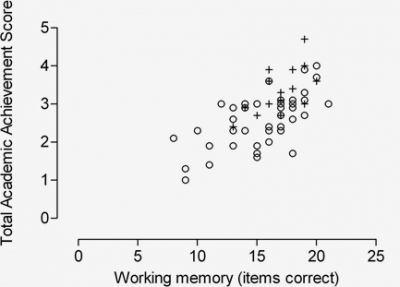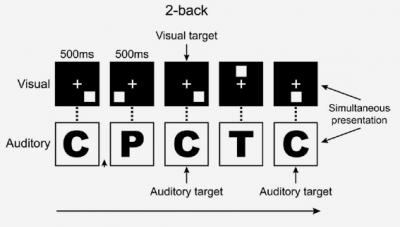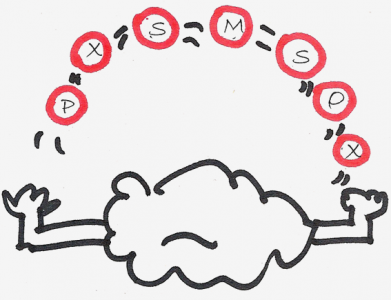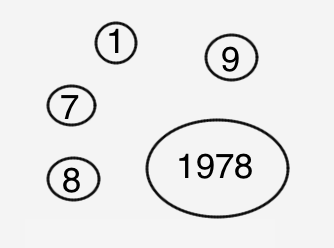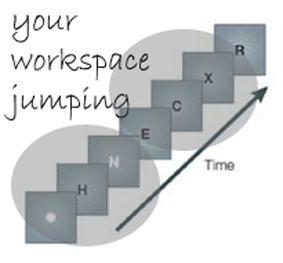How to optimize your dual n-back training?
What are the best strategies for increasing your working memory capacity and dual n-back level?
Some of you apply a kind of ‘internal counting’ strategy, rehearsing the letters and visualizing the locations in mind after each new presentation. Some of you use an ‘intuitive’ strategy in which you let your ‘subconscious’ mind guide your responses in the task. Some of you may use ‘chunking’ strategies where you rehearse series of letters or numbers in a strategic, broken-up way, allowing your attention to flexibly focus on getting the minimum score to maintain or go up a level.
Your aim is to use dual n-back training to expand your working memory capacity. Your n-back level should be a measure of your working memory capacity – but it often is not.
What are the best strategies for increasing your working memory capacity and for improving your overall cognitive functioning?
Before we tackle this question directly, let us review some of the basics. Dual n-back programs like i3 Mindware are designed to train your working memory and expand its capacity.
Working memory definition
Working memory (WM) has been defined as:
“It is a set of skills that helps us keep information in mind while using that information to complete a task or execute a challenge.”
Matthew Cruger
A useful metaphor for working memory is the ‘mental workspace’.
“a flexible, capacity limited, mental workspace used to store and process information in the service of on-going cognition”
Morrison & Chein, 2010
Working memory has two separate short term stores for two types of information: verbal and visuo-spatial. These are sometimes called the ‘phonological loop’ and the ‘visuo-spatial scratch pad’.
Model of the components of working memory
There is also a ‘super-system’ called the ‘Central Executive’ that controls the flow of information into these two short term stores, and the filtering out of irrelevant information in order to focus on and remember information that helps with our goals and current tasks. This is an attentional control system.
Working memory capacity definition
Working memory capacity reflects the ability to maintain a few task-relevant items of information (such as concepts, rules or images) in the face of distracting irrelevant information. Since working memory makes information available for more advanced cognitive processing, working memory capacity – the number of distinct ‘chunks’ of information you can hold in mind at the same time – is one of the main rate limiting factors for higher-order cognitive functions such as fluid intelligence, planning, complex decision making, comprehension, and creative problem solving.
In general terms, the larger your working memory capacity or ‘mental workspace’, the greater your capacity for higher order cognition and thus academic and professional achievement. An example of this relationship is shown below.
Effective working memory training: Dual N-back training
The aim of all WM training programs is to expand working memory capacity. The most widely studied brain training exercise targeting WM capacity is the N-back task. The N-back task involves viewing a continuous stream of items (e.g., letters) and deciding whether each item matches the stimulus presented n stimuli back. In Dual N-back training, a verbal and a visuo-spatial stream of items is presented simultaneously and item matches have to be detected for both types of information. This dual task requires updating items in both the visual short term story and the verbal short term stores of working memory.
We have now reviewed the necessary background information to answer the main question of this article:
Two types of dual n-back training: strategy training and core training
There are two basic types of training for IQ Mindware’s dual n-back and other working memory training programs: strategy training and core training (review Morrison & Chein, 2011).
The key difference between these is one type is what cognitive scientists call ‘domain-specific’, while the other type is what cognitive scientists call‘domain-general’.
Domain specific means for a particular type of information.Training with domain-specific strategies allows you to remember increasing amounts of information of a particular type – whether visual/spatial or verbal/audio. An example of this kind of training is rehearsal – repeating letters to yourself to keep them in mind.
Domain general means something that deals any type of information. Core training targets domain-general working memory functions such as attentional focus, ignoring irrelevant information, processing visual and audio stimuli both at the same time, and responding to targets. These kinds of functions are the most important ones in your working memory training, and have the most wide-reaching benefits for your cognition.
Let us look at each type of training in more detail.
1. Strategy training
This involves using specific techniques or strategies for keeping in mind either audio/verbal or visuo-spatial information on the n-back task. There are three types of strategy training that are often used in i3’s training program:
1. Rehearsal. Both children and adults can improve on the dual n-back through using, and practicing with what is called rehearsal. For the audio stimuli, this is experienced as a inner voice – or ‘sub-vocalization’ – that repeats the string of letters to keep them in mind, continually updating the list as new letters are presented. The letters may even be said aloud using this strategy. For the visuo-spatial stimuli, this is experienced as a point-by-point ‘scanning’ of the different locations of the squares. This may involve imagining the locations or actually moving the eyes. Both the sub-vocalisation and scanning are ‘rehearsal’ strategies, and they may improve working memory capacity the efficiency of working memory’s Central Executive.
2. Chunking. Sometimes during the dual n-back task, a letter or location may be repeated one two or even three times. When this happens it is easier perform on the n-back exercise because with only one ‘place holder’ there is less information to ‘encode’ to do the task. Or at other times, there may be a meaningful string of letters that forms a word or acronym, or the sequence of locations forms a known shape. When items can be grouped together like this, easing the burden on our memory system, this is called ‘chunking’. Chunking can also benefit from practice.
3. Attention jumping. As you get more experienced with the i3 Mindware n-back task, it is possible to strategically direct your attention in ‘jumps’ to useful strings of letters or square locations in order to maintain or go up an n-back level. Using this strategy, you are not actually updating the items in your working memory continuously, but are ‘counting through’ a particular string of items and then refreshing it from the start again for the next string.
Which of these strategy training methods is best for developing your working memory functioning and your overall cognitive ability?
There is a clear answer to this question: rehearsal. Rehearsal can contribute to the overall efficiency and performance of your working memory system.
Using the other two strategies is counter-productive for working memory training. And here’s why. Both these strategies are actually was of getting around (i.e. compensating for) limitations of working memory capacity to increase your n-back performance. But getting practice with these strategies doesn’t actually help increase working memory capacity itself.
You can always avoid attention jumping. Sometimes it is impossible to help yourself ‘chunking’ because repetitions or meaningful combinations of items or patterns just happen randomly from time to time in the exercise. That’s OK. But don’t make a point of looking for patterns and getting practice with this strategy.
Benefits of rehearsal strategy training
There is evidence that rehearsal training can transfer to other working memory tasks and increase memory for other types of information – e.g. rehearsal training for letters could result in improvements for words or numbers. This could be useful in everyday life for remembering instructions, or telephone numbers or passwords!
There is also some evidence (in studies with children) that training with a rehearsal strategy benefits mental arithmetic and the ability to follow instructions.
Rehearsal strategy training has been reported to improve working memory and every day memory in older adults.
2. Core training
Core training is the most important part of your working memory training, and i3 Mindware is specifically designed to be a core training exercises.
Core training targets the domain-general Central Executive of your working memory system – not the two sub-systems we looked at in the model. It is the Central Executive that is responsible for the attentional control that controls the follow of information in your mental workspace – how you filter, update and monitor the information flow for both audio and visuo-spatial items.
When you do the dual n-back exercise in i3 Mindware you are benefiting from core working memory training because the training:
- Minimizes the effects of practice and automatization. You cannot go onto ‘automatic pilot’ to do the task, but have to constantly focus and work at it to perform well. Practice doesn’t make it easier!
- Requires that you process both visual and audio information together and can switch attention between them, keeping track of two modalities.
- Requires that you ignore distracting information – focusing on only what is needed for ‘matches’.
- Enforces quick encoding and memorization of both visual and audio information.
- Requires that you continually update the contents in your working memory ‘workspace’ in a continuous stream of information, and keep track of the order.
- Adapts to your varying level of performance, so you always have high attention and processing demands.
- Requires that you monitor yoru ongoing performance and change your effort and strategies based on your performance.
It is this kind of Central Executive training that spans both modalities that most effectively expands the workspace of your mind, and thus improves performance on a wide variety of cognitive skills.
How can you improve core training with i3’s software options?
You can’t help but do core training when you do the n-back task. But there are ways you can ensure that you are doing the best core training that you can:
1. Intuition. When you feel like you are doing the n-back ‘intuitively’ (rather than by rehearsal), provided that you are not using an ‘attention jumping’ strategy (described above) and your n-back level is improving, you are doing core training – so there is no problem there. We suggest that you combine rehearsal with intuition in your training to be most efficient. If you feel like you are attention-jumping, go back to rehearsal. Otherwise, experiment with intuition.
2. The best training settings for core training in i3 Mindware are:
- 1 second setting (fast) to increase the ‘workload’ of your training. It also speeds up your training sessions which helps with motivation.
- Error feedback – so you can better learn from your mistakes. This is a better way to monitor your performance.
Once you have best optimized your core training, you can expect many benefits to your overall cognition.
Summary
In summary, when it comes to strategy training, use rehearsal and get practice using this. Aside from this, make sure you focus on core working memory training training, and use the recommended settings to optimize core training to expand your working memory capacity.
Don’t confuse n-back level with working memory capacity: they can diverge significantly if you use the wrong strategies.
Reference
Morrison, A. B., & Chein, J. M. (2011). Does working memory training work? The promise and challenges of enhancing cognition by training working memory. Psychonomic Bulletin & Review, 18(1), 46–60. doi:10.3758/s13423-010-0034-0




